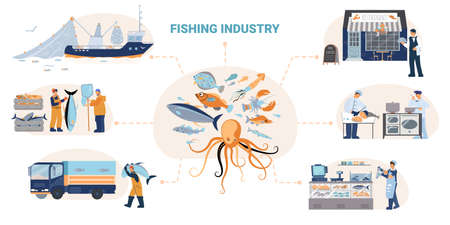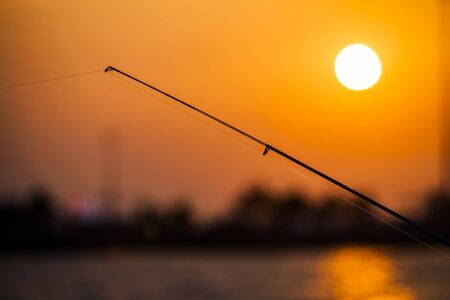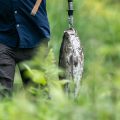Why the Florida Keys Are a Bucket List Destination for RV Anglers
If you live for the open road and the thrill of saltwater fishing, the Florida Keys should be at the very top of your bucket list. This legendary island chain isn’t just a tropical paradise—it’s a hardcore angler’s playground, offering some of the best fishing action in North America. Rolling up in your RV means you get the best of both worlds: killer campsites right by the water, and direct access to world-class fisheries teeming with tarpon, bonefish, snapper, grouper, and more. The Keys blend that laid-back coastal vibe with serious sportfishing cred. Whether you’re chasing monster pelagics offshore or stalking shallow flats for wily permit, there’s something here for every saltwater enthusiast. And let’s be real—there’s nothing quite like pulling up to a waterfront campsite, rigging up your rods under the palms, and swapping big fish stories with fellow RVers around the fire after a long day on the water. For RV anglers who crave freedom, epic scenery, and hard-hitting fish, the Florida Keys are simply unbeatable.
Essential Gear and RV Setup for Keys Fishing
When you roll into the Florida Keys, you need to be ready for fast-changing conditions, hard-fighting fish, and salt that’ll eat your gear alive. Here’s a no-nonsense breakdown of what every RVer needs on hand—whether you’re casting from a bridge, paddling the flats, or running offshore in a borrowed skiff. And if you want your rig to survive the trip, don’t skip our saltwater-proofing tips.
Must-Have Fishing Tackle for the Keys
| Gear Type | Recommended Specs | Why You Need It |
|---|---|---|
| Spinning Rod & Reel Combo | Medium-heavy, 7–8, 15–30 lb braid | Versatile for snapper, snook, tarpon; handles bridge and pier fishing |
| Baitcasting Setup | Heavy action, 20–40 lb line | Great for targeting bigger species near structure |
| Tackle Box Essentials | Spoons, jigs, soft plastics, live bait rigs, circle hooks (3/0–6/0) | Covers most inshore and reef scenarios |
| Terminal Tackle Kit | Leaders (fluorocarbon 30–60 lb), swivels, split shot, weights | Salt-resistant materials keep you fishing longer |
| Fish Gripper & Long-Nose Pliers | Corrosion-resistant stainless steel/aluminum | Safely handle toothy critters like barracuda or mackerel |
Kayak and Boat Options for RVers in the Keys
| Type | Pros | Cons | Best For |
|---|---|---|---|
| Inflatable Kayak/SUP | Packs down small, lightweight, easy to store in RV cargo bay | Wind-sensitive; best for calm days and sheltered areas only | Paddling the backcountry or mangroves solo or with a buddy |
| Sit-On-Top Fishing Kayak (Hard Shell) | Stable; rod holders; more storage for tackle/cooler; better tracking in wind/current | Bigger footprint; requires roof rack or trailer for transport/storage at campgrounds may be limited space-wise | Larger bodies of water and those who want to stand and sight-cast |
| Small Skiff or Jon Boat (12–16’) | Carries multiple anglers; can hit reefs/patches inaccessible by kayak; more range | You’ll need a tow vehicle/trailer setup; higher maintenance due to salt exposure | Bayside or oceanside excursions, group trips |
Clever RV Modifications to Stay Saltwater-Proof
- Add an Outdoor Rinse Station: Install a portable shower head or hose connection on your RV’s exterior. Rinse rods, reels, and yourself before going inside.
- Create a Dedicated “Wet Locker”: Use a waterproof tote or install a plastic-lined compartment near your entryway for salty gear—keep sand and brine out of your living area.
- Tackle Storage Hacks: Mount PVC rod holders on your rear bumper or ladder. Use clear tackle trays labeled by target species so you’re never fumbling at dawn.
- Corrosion Defense: Keep WD-40 or CorrosionX handy in the RV tool kit. Hit zippers, snaps, and all moving parts after each outing.
The Bottom Line: Pack Smart & Adapt Fast
The Florida Keys reward anglers who come prepared. Invest in tough gear built to survive saltwater abuse and think about your RV as more than just a home base—it’s mission control for every fishing adventure. With these essentials dialed in, you’ll spend less time fixing gear and more time chasing that next big hookup.

3. Where to Stay: Top RV Parks and Campgrounds in the Keys
If you’re hauling your rig to the Florida Keys with visions of reeling in trophy tarpon or a mess of snapper, finding the right place to park your home-on-wheels is just as crucial as picking the perfect lure. The Keys are peppered with RV parks and campgrounds, but some rise above the rest for anglers looking for more than just a place to plug in.
Prime Spots for Anglers
First up, Boyd’s Key West Campground is legendary among road warriors. Situated just minutes from downtown Key West, this spot offers full hookups, a boat ramp, and direct access to both the Gulf and the Atlantic. You’ll find cleaning stations and a friendly vibe where swapping fish tales around the pool is half the fun.
Marina Access That Matters
If you want to launch your skiff at sunrise without fighting crowds, check out Bluewater Key RV Resort. Sites come with private docks—no more schlepping gear across a parking lot—and high-end amenities like tiki huts, cable TV, and a solid Wi-Fi signal (so you can upload that monster catch to your Instagram before breakfast). Local guides often swing by in the evenings to share what’s biting and where.
Hidden Gems Only Insiders Know
The seasoned salty dogs whisper about Curry Hammock State Park on Little Crawl Key. It’s less flashy than some resorts but nails the essentials: waterfront campsites, easy kayak launching, and miles of flats teeming with bonefish and permit. Another local favorite is Jolly Roger RV Resort in Marathon—affordable, laid-back, and known for its killer sunset views and quick access to both offshore action and backcountry honey holes.
Amenities That Make All the Difference
Look for parks offering secure trailer storage, on-site bait shops, shaded fish-cleaning tables (trust us—you’ll appreciate this after a day under the Florida sun), and friendly staff who know their snook from their snapper. Some parks even run fishing tournaments or have partnerships with local charters for those days when you want a pro at the helm.
Your Launchpad for Adventure
No matter if you’re rolling in with a 45-foot diesel pusher or keeping it old-school in a vintage Airstream, there’s an RV-friendly spot waiting for you in the Keys. Just remember—book early during peak season. The best sites fill up fast once word gets out that the bite is on.
4. Local Regulations and Licensing—Don’t Get Burned
If you’re rolling into the Florida Keys with your RV and a trunk full of rods, don’t let a simple paperwork slip-up ruin your fishing adventure. Florida takes its fisheries seriously, and the Fish and Wildlife Conservation Commission (FWC) has strict rules that every visiting angler must follow. Here’s what you need to know before you drop a line.
Fishing Licenses: What You Need
Unless you’re under 16 or over 65 (and a Florida resident), you’ll need a valid fishing license—period. Whether you’re casting off the shore, from a kayak, or aboard your buddy’s boat, there are different licenses for freshwater, saltwater, or combo options. The good news? Most are easy to buy online or at local bait shops, but make sure it matches your type of fishing.
| License Type | Resident Cost | Non-Resident Cost |
|---|---|---|
| Saltwater Fishing License (Annual) | $17 | $47 |
| Saltwater Fishing License (7-Day) | N/A | $30 |
| Combo (Fresh/Salt Annual) | $32.50 | N/A |
Bag Limits: Don’t Overdo It
The FWC enforces daily bag and size limits on nearly every species in the Keys—think snapper, grouper, tarpon, and lobster. Ignorance isn’t an excuse here; game wardens do patrol, and fines aren’t cheap. For example, yellowtail snapper is limited to 10 per person per day, with a minimum size of 12 inches. Lobster season? Only six per person per day during regular season.
| Species | Bag Limit/Day | Minimum Size |
|---|---|---|
| Yellowtail Snapper | 10 | 12 in. |
| Lobster (Regular Season) | 6 | Carapace >3 in. |
| Mahi-Mahi (Dolphinfish) | 5 | 20 in. fork length |
No-Go Zones and Special Rules
The Florida Keys are dotted with marine sanctuaries and protected areas where fishing is completely off-limits—even catch-and-release can get you in trouble. Always check local maps or ask at the nearest bait shop about closed zones before launching your skiff or kayak.
Painful Penalties Await Rule-Breakers
The FWC doesn’t mess around: violations can mean steep fines, confiscated gear, or even criminal charges for major offenses like poaching or exceeding commercial quantities. Bottom line? Respect the rules so your only stories from the Keys are about monster fish—not run-ins with law enforcement.
5. Species Spotlight: What You’ll Catch and When to Go
Season-by-Season Rundown of Florida Keys Fishing
If you’re an RVer rolling down US-1 with rods in the rig, you need to know what’s biting and when. The Florida Keys are legendary for their year-round action, but serious anglers play the seasons. Here’s a hardcore breakdown of the top game fish—tarpon, snapper, grouper, and mahi-mahi—and how to time your trip for a killer haul.
Spring: Tarpon Time
From March through early June, the Silver King rules the bridges and channels. Tarpon migrate in massive schools, especially around Seven Mile Bridge and Bahia Honda. For RVers, plan to park close to these hotspots—night fishing under the bridges with live crabs or mullet is prime time. Local tip: dusk and dawn tides are when the monsters feed hardest.
Summer: Mahi Madness & Mangrove Snapper
June through August is all about fast-paced mahi-mahi (dolphin fish) action offshore. Look for weed lines and floating debris beyond the reef line—Islamorada and Marathon are famous jump-off points. Inshore, mangrove snapper stack up around bridges and shallow reefs. Early morning is best before boat traffic heats up. Bring plenty of ice; summer heat means you’ll want to keep your catch fresh.
Fall: Grouper & Yellowtail Bonanza
As temps drop in September through November, black and gag grouper fire up on deep wrecks and ledges. Key Largo to Big Pine Key holds some of the best bottom structure—use heavy tackle and live pinfish or ballyhoo. Yellowtail snapper school up on patch reefs; chum hard for nonstop action. Hardcore locals swear by moon phases—new moons bring bigger bites.
Winter: Mixed Bag Action
December through February keeps things interesting with a grab-bag of species. Cooler water brings mutton snapper inshore, while king mackerel blitzes hit offshore reefs. Bridges remain steady for snook and sheepshead—shrimp on jigheads gets it done. Pro move: fish the falling tide after a cold front for your best shot at a trophy.
Hotspot Hacks for RV Anglers
The Keys have no shortage of killer spots, but here’s where RVers can get extra mileage: Long Key Bridge (easy access), Bahia Honda State Park (RV-friendly), and Indian Key Fill (shoreline casting). Ask locals at bait shops about current bite reports—they know which mile marker is hot that week.
Whether you’re chasing tarpon under the moonlight or filling coolers with snapper, knowing what runs when—and where—is what separates tourists from true Keys anglers. Plan your season, pick your targets, and get ready to make some epic fishing memories right outside your RV door.
6. Pro Tactics: Keys Fishing Hacks for Serious RVers
If you’re rolling into the Florida Keys with your RV, you’re already on the path to angling glory—but only if you know how to play it smart. The locals don’t just toss a line and hope for the best; they use sharp tactics, the right bait, and maximize every inch of their rig. Here’s how to fish like a Keys veteran and squeeze every drop of action out of your RV experience.
Practical Techniques That Work
Start with tide charts and weather apps—serious anglers in the Keys time their casts for moving water. Early mornings and dusk are prime windows, especially near bridges or rocky jetties where snappers and tarpon cruise. Bring a sturdy medium-heavy rod, 20-30 lb braid, and fluorocarbon leaders for stealth. Don’t just wait around—work those live baits with an active retrieve or try drifting if you’re near deeper channels.
Local Bait Secrets
Forget pricey lures; locals swear by fresh shrimp, pilchards, and cut mullet. Hit up a local marina or bait shop in Marathon or Islamorada—ask what’s biting, grab what’s fresh, and don’t overlook catching your own pinfish with a sabiki rig off the dock. Keep a small aerator handy in your RV fridge to keep bait lively on hot days.
Shore Fishing Like a Native
You don’t need a boat to crush it in the Keys. Bridges like Channel 5 or Long Key draw monster tarpon and snapper close after sundown. Pack light: one rod, a backpack tackle box, and headlamp for night runs. Skip the fancy gear; locals use simple knocker rigs or jig heads tipped with shrimp for mangrove snapper along seawalls and piers.
Making Your Rig Work Overtime
Your RV is more than a bed on wheels—it’s your fishing HQ. Store rods overhead using PVC tubes or bungee systems to avoid tangles. Dedicate bins for wet waders, extra line, and tackle trays under your dinette benches. Mount portable rod holders outside so you can set up lines while grilling dinner. Invest in a collapsible kayak or SUP that stows easily—perfect for sneaking into skinny water flats where big reds and bonefish lurk.
Mobility = Opportunity
The beauty of RV life is chasing the bite wherever it happens—move from Islamorada’s backcountry flats to Big Pine’s bridge action in one day. Use Google Maps satellite view to scout remote pull-offs or lesser-known shorelines that rarely see pressure. Stay nimble, keep your gear ready to roll at all times, and you’ll be bending rods while others are stuck at crowded marinas.
With these pro-level hacks, you’ll turn your RV into a lean, mean fishing machine—and maybe even out-fish some of the old-timers who call the Keys home.
7. Respect the Water—Conservation and RV Ethics
If you want to keep coming back to the Florida Keys for epic fishing, you’ve got to play your part as a responsible RVer. This isn’t just about scoring big catches—it’s about making sure there’s still something left for the next guy, and for future generations. Let’s break it down: sustainable fishing means you know and follow size and bag limits, release undersized or out-of-season fish quickly, and avoid targeting protected species. Don’t be that angler who keeps everything—nobody respects a cooler-stuffer in these parts. When it comes to waste, treat the Keys like your own backyard. Dumping bait, trash, or even gray water in or near the water is a fast track to ruining this marine paradise—and getting yourself banned from the best campgrounds. Always use designated dump stations, pack out what you pack in, and dispose of fish remains properly (local marinas often have stations for this). Be friendly with locals and fellow travelers; respect quiet hours at campgrounds, drive slow on access roads, and keep your site clean. The bottom line: if you want to be welcomed back year after year, leave nothing but footprints, take only what you need, and show respect for both the ocean and the community that calls the Keys home.

